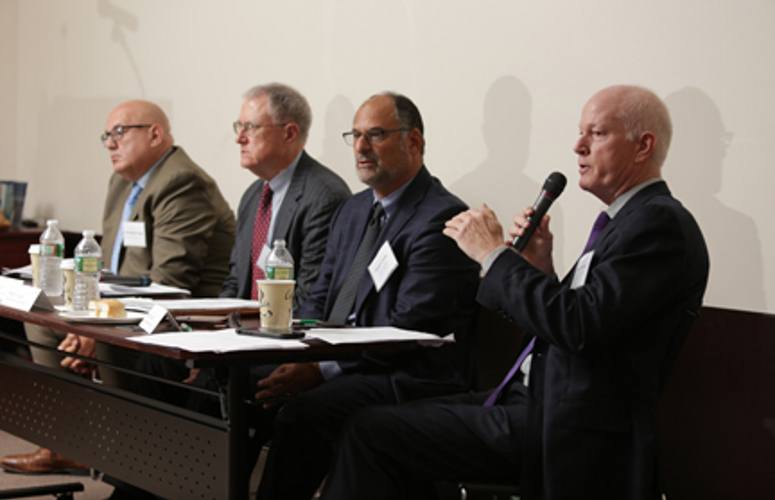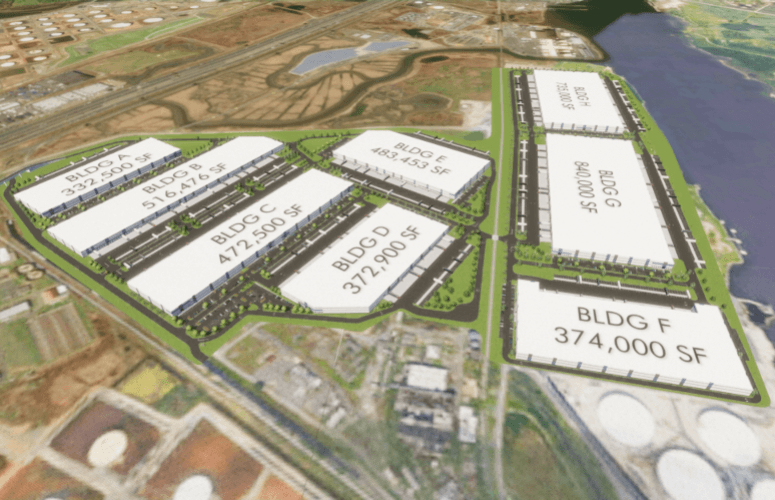
NJ’s LSRP Program the Focus of ‘New World of Site Remediation’ Discussion
On Oct 31, 2018Leading site remediation, environmental risk and environmental law practitioners recently came together to examine some of the most critical site remediation issues facing New Jersey’s commercial real estate developers. Experts from Atlantic Environmental Solutions Inc. (AESI), Chiesa Shahinian & Giantomasi (CSG) and Alliant Insurance Services participated in a panel discussion entitled “New World of Site Remediation” that featured unique perspectives on topics including regulatory and legislative changes, environmental insurance options, and potential revisions to the New Jersey’s Site Remediation Reform Act (SRRA).
AESI President Michael Novak, LSRP, said, “Since its inception in 2009, the site remediation program has helped to accelerate redevelopment across the state and has saved many real estate transactions from failing. As the program evolves, it will continue to help enable the remediation of contaminated properties, which presents opportunities, challenges and questions for all stakeholders involved.”
Novak joined speakers Christopher Alviggi, Alliant vice president, and CSG members Robert H. Crespi and Dennis M. Toft, chair of CSG’s Environmental Law Group, for the interactive panel discussion, which was moderated by CSG member David J. Mairo.
Regulatory and Legislative Changes Impact CRE Developers
A number of proposed regulatory and legislative changes were highlighted, including those related to the use of alternative fill, capping of soils contaminated with volatile organic compounds, and forthcoming litigation connected with natural resource damages (NRD).
“Until recently, industrial real estate developers have been able to import tainted soils as backfill without the approval of the New Jersey Department of Environmental Protection (NJDEP), as long as those soils meet specific requirements and the LSRP files the proper paperwork. This process has streamlined brownfields redevelopment and generated needed cost savings, which has enabled property owners to remediate more problems,” said Novak. “However, for most scenarios going forward, the NJDEP will no longer pre-approve the practice and approve or reject applications on a case by case basis.”
Also new is the issuance of a revised ecological evaluation document that broadens the standard used to investigate contaminated sites. “This has been coming for a long time,” said Toft. “The NJDEP is taking a more active role in defining environmentally sensitive resources at a particular site, possible contamination causing environmental concern and whether there is a migration pathway for contaminants to reach these resources. For developers, this means natural resource damages need to be carefully considered and factored into projects.”
CSG’s Crespi noted the significance of the DEP’s change in the definition of persons responsible for remediation in enforcement actions. “It represents a broad expansion of liability and puts corporate officers squarely in the crosshairs for regulatory enforcement. Companies need to be far more vigilant in the execution of remediation at their sites.”
Stakeholders Weigh in on Efforts to Update SRRA
The panel also addressed the status of efforts to update the highly successful site remediation program since the adoption of SRRA. During the past few weeks, the DEP facilitated a number of stakeholder meetings to discuss possible changes to the language in the law, now known as “SRRA 2.0.” According to Novak, “One potential revision that could negatively impact the commercial real estate and site remediation industries involves language expanding discharge reporting requirements to include any discharge discovered by a purchaser during due diligence.”
The change would require a prospective property buyer to report any discharge to the seller, who would then have to provide the information to the DEP. Attendee Alex Conte, executive vice president with the commercial real estate firm Blau & Berg Co., noted, “When it comes to redevelopment, it is generally the unknown contamination or future surprise contamination that concerns property owners. Has an alternate policy been presented by lobbyists to satisfy both sides of the equation?”
Novak stated that there is “really no middle ground,” and Toft added, “We understand from an environmental standpoint why regulators would want to force reporting of a discharge for information generated by prospective property purchasers. However, the concern is whether such a change would have a chilling effect on the market and deter owners from listing properties, or encourage more properties to be remediated. We believe it will have a negative effect.”
Novak noted that most of the proposed language changes to SRRA reflect the NJDEP’s focus on improving and maintaining the integrity of a system which involves sensitive communications between the NJDEP, property owners and LSRPs. “Overall, most members of these three groups state they are happy with SRRA and the LSRP program and the focus is on making it an even more efficient and effective tool for redevelopment.”
According to Alliant’s Alviggi, a major retrenchment is currently taking place among environmental insurance carriers. “There is a general uneasiness about the new administration’s possible expansion of pursuing NRD claims. Additionally, the carriers have expressed concerns in covering claims triggered by contamination migration and vapor intrusion.”
“Our goal is to help developers close deals by providing meaningful pollution liability insurance, but most carriers will not provide blanket coverage for existing known conditions,” said Alviggi. “The market is pushing back, and the trend is to provide shorter term policies and upload the premiums to fund the greatest probability of risk.”
Atlantic Environmental Solutions, Inc. (AESI) is a full-service environmental consulting firm active in New Jersey, New York and throughout the U.S., providing a wide range of services to assist clients in complying with complex environmental laws and regulations. With two decades of experience in the regulatory, technical, and management aspects of environmental issues, the Hoboken-based firm has handled over $60 million in environmental projects at over 5,000 client locations across 47 states. AESI has closed more than 150 LSRP matters and has 340 total LSRP projects.
To access more business news, visit NJB News Now.
Related Articles:





